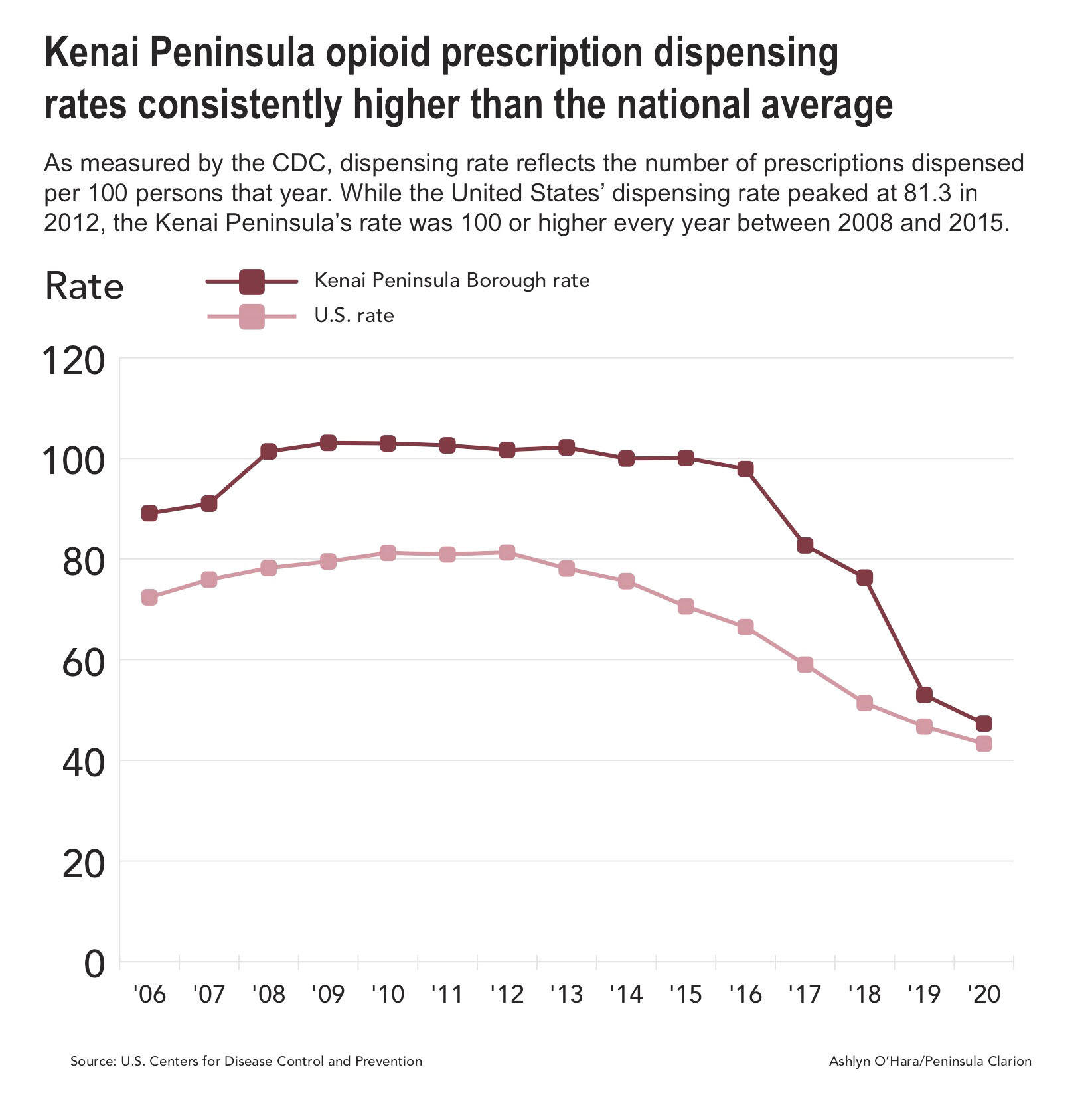The Kenai Peninsula Borough is accepting through the rest of this month applications for its Opioid Settlement Fund Grant Program, which was launched in August and has not yet received applications.
The money available through the grant program comes from a nationwide settlement agreement involving major pharmaceutical companies Cardinal Health Inc., McKesson Corporation and AmerisourceBergen, as well as Johnson & Johnson for the role those companies played in the opioid crisis.
The three companies were the top three opioid distributors in Alaska between 2006 and 2014, according to a database maintained by the Drug Enforcement Administration, which was made public by The Washington Post and tracks shipments of oxycodone and hydrocodone pills.
The Alaska Department of Law announced earlier this year that Alaska will receive $58 million from the $26 billion settlement, about 70% of which will go to Alaska’s Opioid Abatement Accounts fund.
About $8.7 million, representing about 15% of the $58 million, will go to nine political subdivisions that opted to participate in the settlement, including the Kenai Peninsula Borough. Of that $8.7 million, the borough will get about 9.5% — around $826,500, to be distributed to the borough over 18 years.
The Kenai Peninsula Borough Assembly accepted in August an initial payment of about $30,000. A second payment, also for about $30,000, is up for consideration by the assembly at its Nov. 15 meeting. If approved, the legislation would deposit that second payment into the borough’s Opioid Settlement Fund Grant Program.
The legislation authorizing the borough to participate in the lawsuit, which the assembly approved last year, cites the “heartbreaking impact” the opioid crisis has had on Alaska families and the role local governments have in addressing the issue.
“Local governments are on the front lines of the opioid epidemic which has imposed significant continuing costs for healthcare, criminal justice, social services, emergency medical response providers, and the education system in Alaska,” that legislation says.
A Clarion survey of opioid dispensing rates on the Kenai Peninsula, conducted earlier this year, found that opioid prescription dispensing rates on the Kenai Peninsula were consistently higher than the rest of the country between 2006 and 2020. As measured by the CDC, dispensing rate reflects the number of prescriptions dispensed per 100 persons that year.
Kenai Peninsula Borough Community & Fiscal Projects Manager Rachel Chaffee said Wednesday via email that the borough has not yet received any applications for the borough’s grant program, but that she hopes to see some come in from agencies around the Kenai Peninsula.
Eligible uses of grant funds, which are outlined in the settlement agreement, include care, treatment and other programming designed to address the misuse of opioid products, treat or mitigate opioid use or mitigate other alleged effects of the opioid epidemic.
The borough’s grant program is limited to five grants per year to eligible agencies. Those agencies include nonprofit organizations, medical and mental health providers, businesses who employ medical or mental health providers and Native Tribes and Corporations that have not previously received opioid settlement funds.
Any funds awarded through the borough’s grant program must be spent before the end of 2023.
More information about the Opioid Settlement Fund Grant Program can be found on the borough’s grant opportunities at kpb.us/mayor/grants.
Reach reporter Ashlyn O’Hara at ashlyn.ohara@peninsulaclarion.com.

